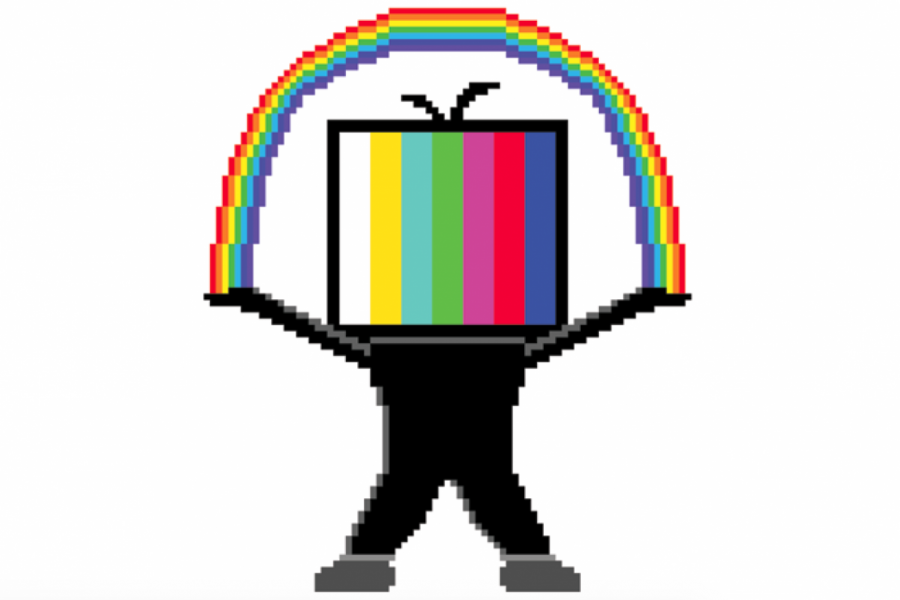The Long Road to LGBTQ Representation in Media
While often fantastical, film and television tell the lived experience of diverse viewers, mirroring the stories of millions. That being said, film and television do not always accurately represent the people of this world.
Victor D. Evans, an assistant professor of communications at Seattle University, presented his second film in the “Curved TV” series. Appropriately titled “Curved TV: Take 2,” the showing drew a crowd of both students and faculty. With a focus on television in the 2018 American season, “Curved TV: Take 2” delves into examples of LGBTQ representation in television, as well as shines a light on the shortcomings of media representation.
The film features interviews from Seattle U students and faculty, as well as a critical analysis of current examples of representation. The film portrays a hopeful picture of current LGBTQ representation in film while showing how representation can still be improved. While the film cites such series as “Pose,” an Fx production lauded for its intersectional representation of LGBTQ stories, the film also cites shows like “Riverdale,” which has faced backlash for tokenistic exploitation of LGBTQ storylines.
Elizabeth Martin, a second-year design major, spoke to the importance of representation in film and television. “It brings awareness to certain issues, especially at a school like this that showcases social justice,” Martin said.
The idea of showcasing representation and social justice efforts at Seattle U is particularly relevant at the moment, and is echoed by other attendees.
Kashish Sekhon, a second-year communications and pre-law major, noted the importance of creating a safe space on campus for underrepresented communities.
“Even though Seattle U does advertise social justice, I think there’s always more diversity needed to feel safe in a space, so just showing the movie makes people feel safe and part of the community,” Sekhon said.
Sekhon’s comment points to the ability of films such as “Curved TV: Take 2” to create a more welcoming atmosphere at Seattle U.
The featured interviews are incorporated in to contextualize the concept of representation with regard to its impact on young people.
The clips of student interviews in the film precede and follow television clips, showing the real-life effects of representation upon the lives of young people. Beyond the use of the student interviews to contextualize the subject matter, the students also describe the issues that remain for representation of LGBTQ stories in television.
Jacqueline Maciel, a second- year communications major, took a moment to describe the role that representation has played in her own life.
“I’m Mexican and seeing someone else who’s Mexican on TV helps me relate to them,” she said. Maciel’s comment confirms the real-life impact of representation, but unfortunately the representation of historically oppressed communities still has a long way to go.
While the film cites older problematic representations of LGBTQ storylines such as “Will and Grace,” it also draws attention to current misrepresentations in television. “Curved TV: Take 2” notes that film and television still have a tendency to fall back on old and damaging tropes. While this may be the case, strides are being made.
Evans, the film’s creator, took a moment to discuss the importance that television has played in his own life.
“I was an African-American kid growing up in the south,” Evans said. “Growing up I had to deal with issues of race, which I was able to go to my parents with.”
Evans, however, couldn’t go to his parents when it came to issues of sexuality.
“I turned all my energy into television, you know, it was the first time I started seeing representation,” Evans noted.
Since Evans’ childhood, LGBTQ representation in television has vastly improved. After the screening of “Curved TV: Take 2,” students in attendance remarked on the role that LGBTQ representation in television has played within their lives.
While Evans’ documentary draws attention to the improvements yet to be made with regard to LGBTQ representation in film and television, the film also leaves viewers with a sense of hopefulness. LGBTQ representation may not be perfect, but strides are being made.
Evans hopes to make a third film in the “Curved TV” series, a film featuring interviews with the producers, directors and writers who have the power to make significant changes in terms of representation.
The editor may be reached at arts@su-spectator.com


